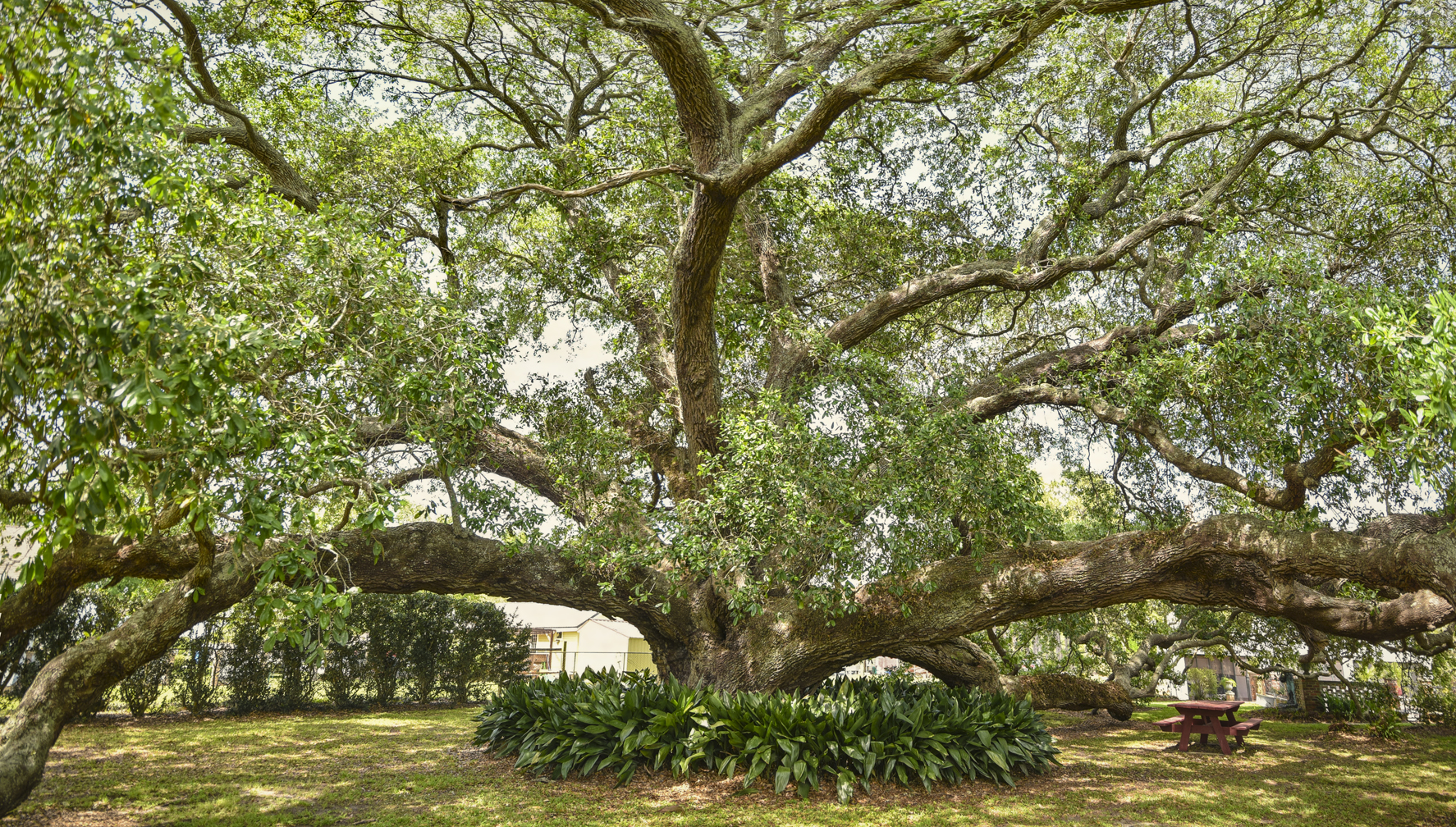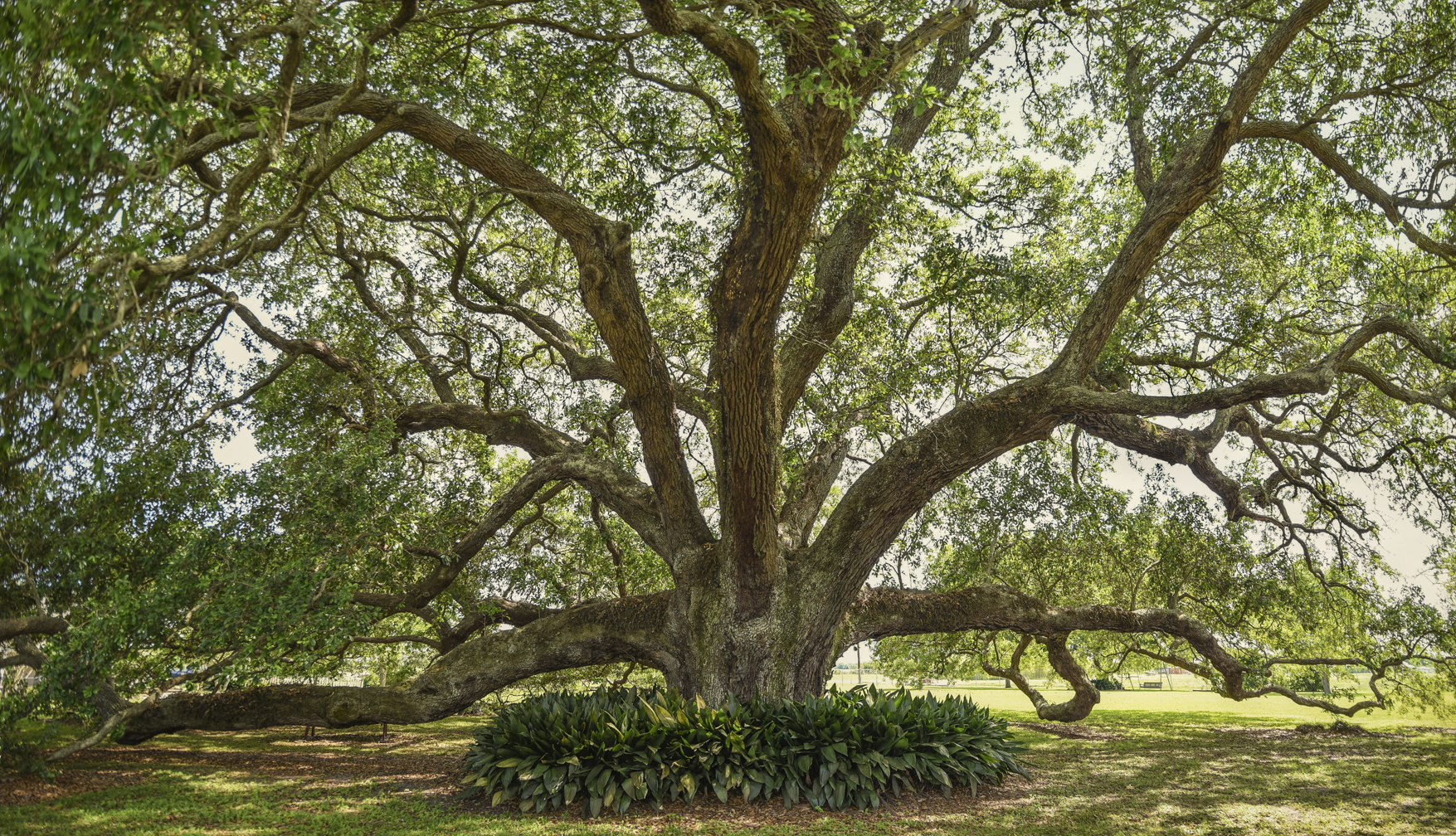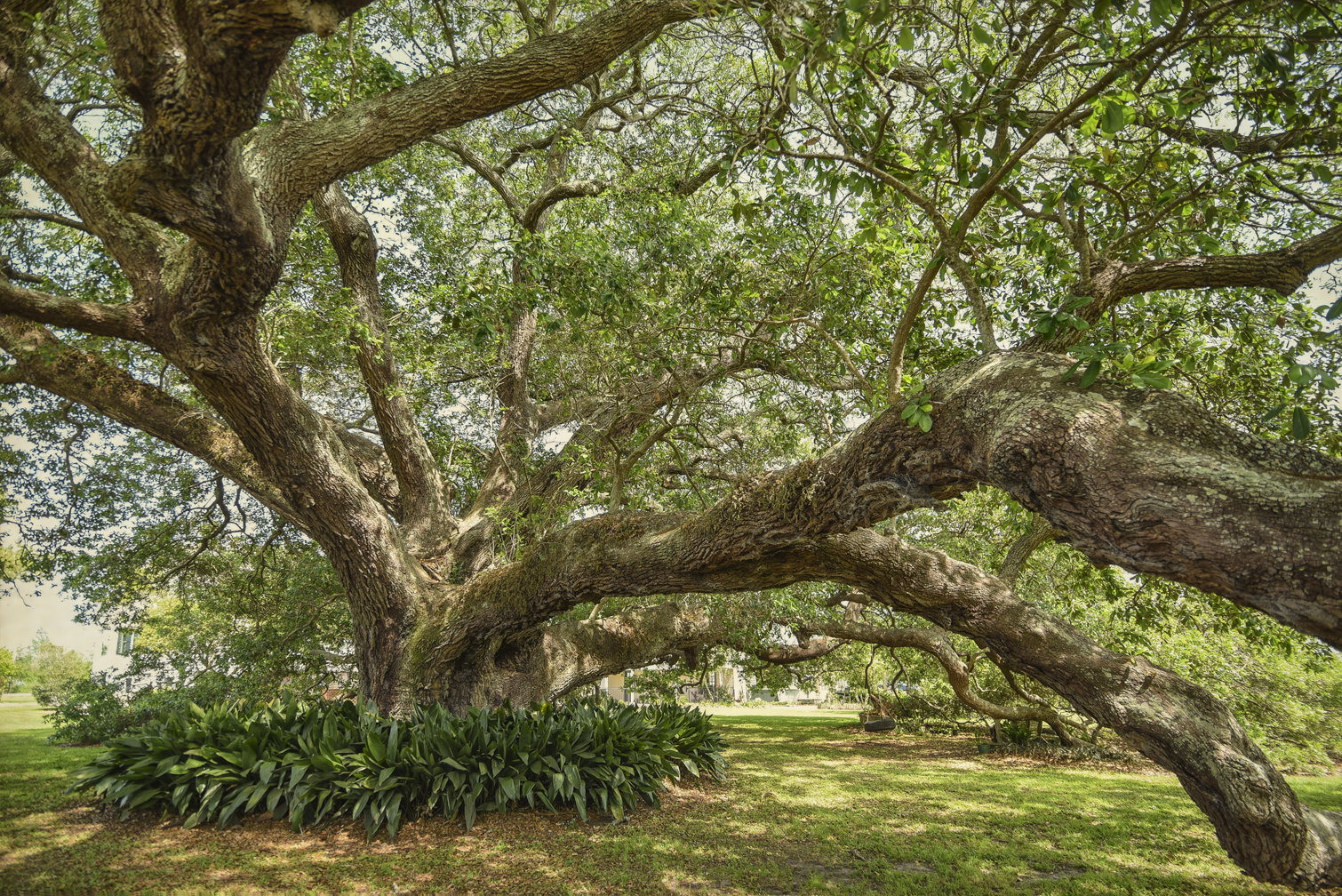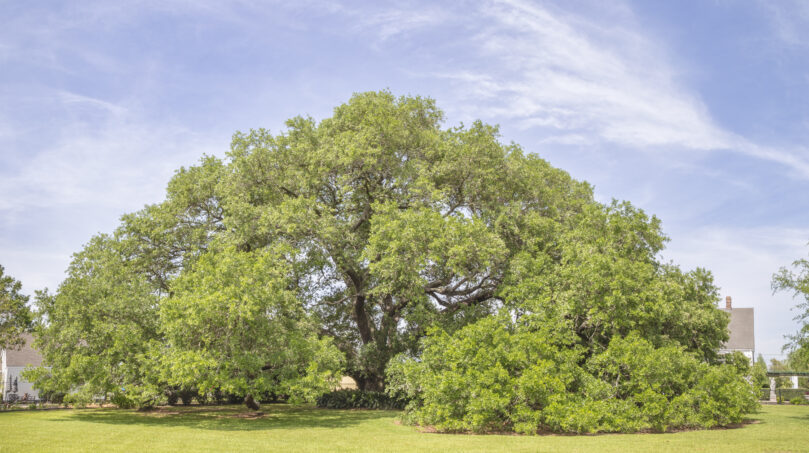(The Bouverans Plantation Oak is located on the west bank of Bayou Lafourche on Highway 1 about 1.5 miles south of Lockport. In Lockport, Highway 1 turns away from the bayou, makes a large loop around the town, and then rejoins the bayou near the southern city limits of Lockport.)

The Bouverans Oak is registered with the Live Oak Society (#506), by Dr. Hebert Roy Graf, between 1974 and 1979, with a size of 17 feet in girth. As of April 2017, the oak is between 25 and 27 feet in girth – the exact measurement is difficult to determine because of a very large limb that branches away from the main trunk at about 3.5 ft. from the ground. The old oak predates the construction of the Bouverans home by probably 100 years or more. It’s an enormous and beautiful old tree with a long history. You’ll notice the two-story Bouverans home looks dwarfed to the right of the oak in the top photo.
In the 1780s, Jacques Lamotte received a Spanish land grant for this property. It then passed through several owners before it was purchased in 1852 by Austin Cunio. Then, around 1856-57, Cunio planted his first crops and built several buildings on the property. It’s believed that Cunio named his plantation Arialo (from the French “ari” – meaning wholly drained, and “alo” or “alleu” – meaning land owned outright).

In April 1860, Pierre Joseph Claudet purchased the plantation from Cunio and named it for his native village of Bouverans, France. Within the next week, Claudet purchased several pieces of adjacent property until he had almost 1200 acres of farmland. Later, through marriage between the Claudet and Badeaux families, Claudet’s interests included several other area plantations on both sides of Bayou Lafourche.

The Bouverans house is a beautiful two-story brick and frame home and is on the National Register of Historic Places. It’s significant historically because it is a rare surviving example of the transition from Creole to Greek Revival architecture styles that began around 1820 and lasted through the 1860s in antebellum Lafourche Parish.

Except for a brief five-year period, the Bouveran home has been owned by descendants of Pierre Joseph Claudet. The current restoration was done by Pierre’s great-great-grandson and wife, René and Barbara Claudet.
The Lafourche Live Oak Tour was created through the generous support of Louisiana’s Cajun Bayou Tourism. For more information on Lafourche Parish events and activities, visit their website at LACajunBayou.com.

